2022
Earth observation revenue, 2014-2023
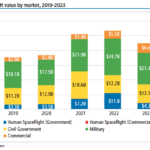
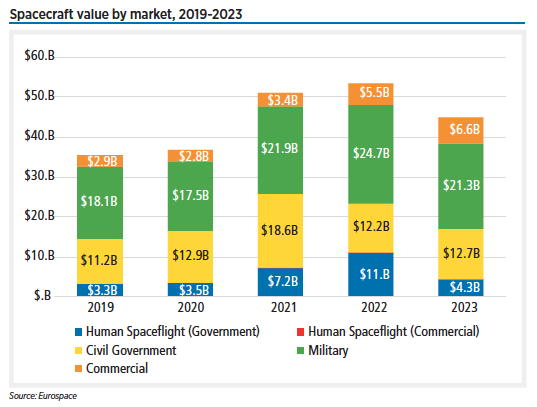
Access Markets International estimates that the global Earth Observation sector generated $5.9 billion in revenue in 2023, up 8% over $5.4 billion in 2022.
Launch value by market, 2019-2023
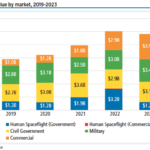
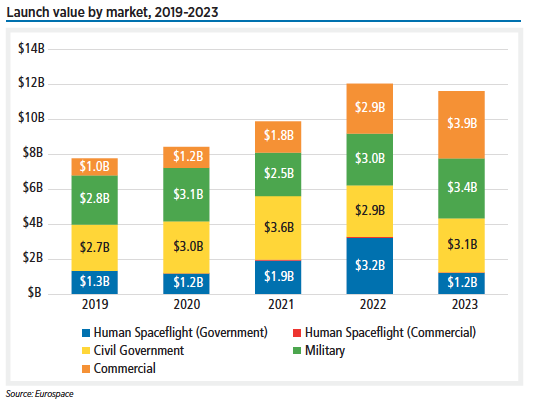
The market value of uncrewed commercial launches conducted in 2023 was $3.9 billion. This is an increase of 35% compared to the $2.9 billion in revenue in 2022, driven largely by the accelerating deployment of the Starlink constellation.
Proportion of governments that increased space spending, 2019-2024
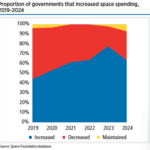
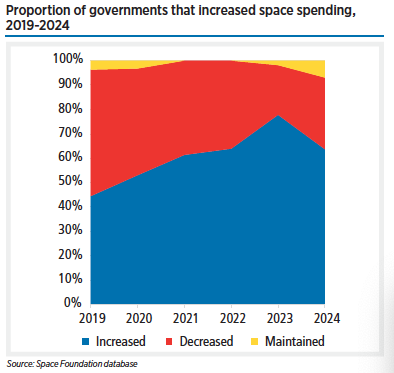
On the government side, international space spending grew 11% to $125 billion. The United States accounted for 59% of government spending between its civil and military space programs.
Top three commercial space sectors, 2019-2023
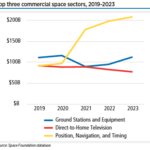
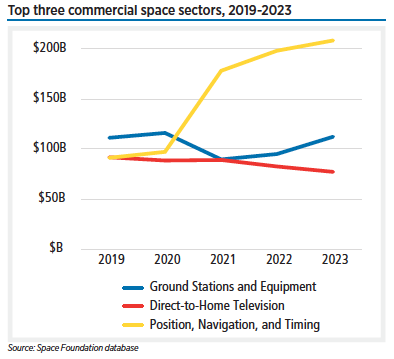
Commercial revenues totaled $445 billion in 2023, 6.5% higher than the prior year. Position, Navigation, and Timing (PNT) increased slower than overall commercial revenues, growing 5.4% last year. Despite the smaller magnitude of the Ground Stations and Equipment revenues (about half the size of PNT), the category grew 18% in 2023. Direct-to-Home Television, the third-largest category, continued its gradual five-year decline.
NASA commercial contracts awarded, 2016-2023
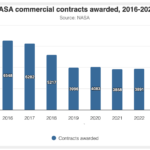
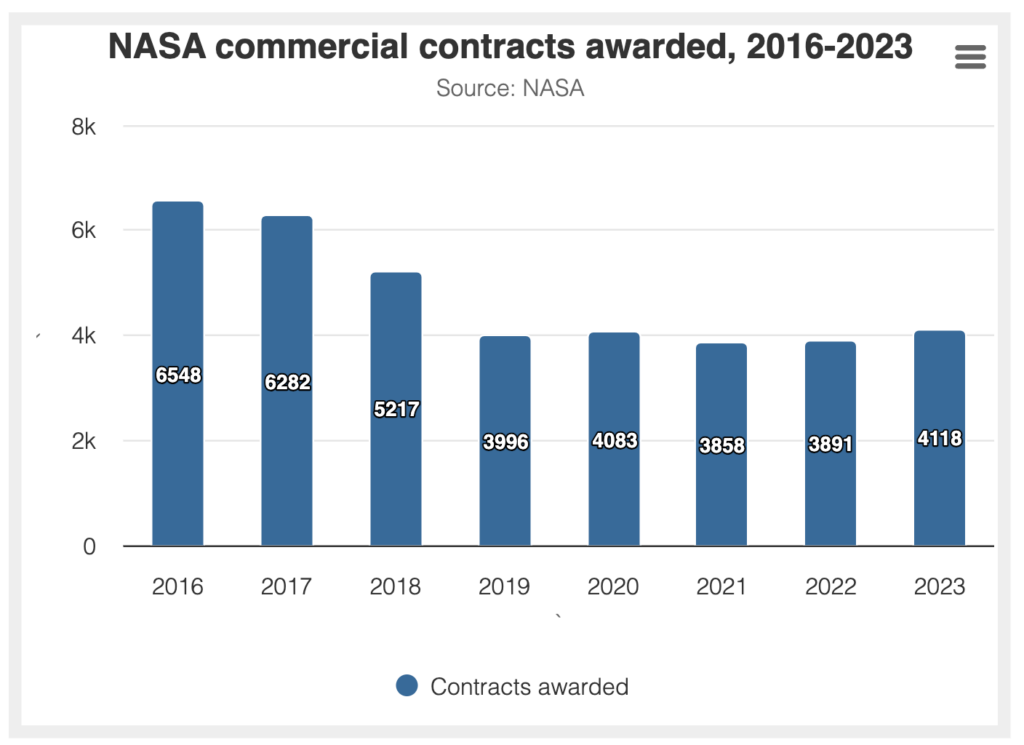
Through the CLPS initiative, NASA is working with 14 American companies to provide payload integration to, and surface operations on, the Moon. The initiative holds a cumulative maximum contract value of $2.6 billion through 2028.
Global space activity by category, 2005-2023
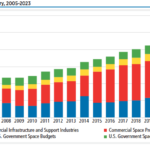
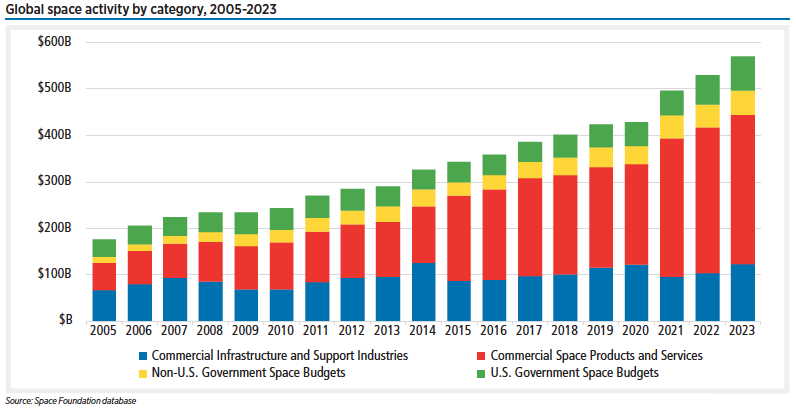
Commercial space revenues, which make up the majority of the space economy, grew 6.5% in 2023 to reach $445 billion. Government space spending increased by double digits for the third year in a row and reached a peak in the proportion of nations increasing their space budgets.
Government space budgets grow 11% to reach new heights
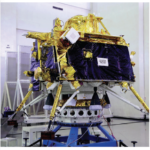
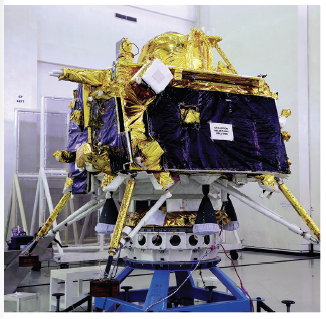
International government space budgets reached new heights in 2023 with $125 billion spent on space programs, 11% higher than a revised 2022 total of $113 billion.
NASA goes full throttle for Artemis, cuts other programs
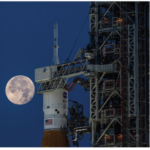
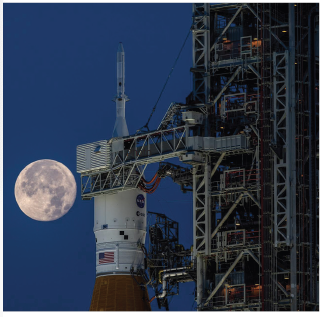
Faced with a budget capped at 2023 levels, NASA is striving to save its lunar ambitions, laying off employees and cutting programs in favor of the Moon. It is a pivot for the agency, which had warned budget cuts contemplated by Congress in 2023 could endanger Artemis.
Global space economy steadily grows to $570 billion
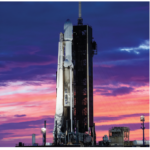
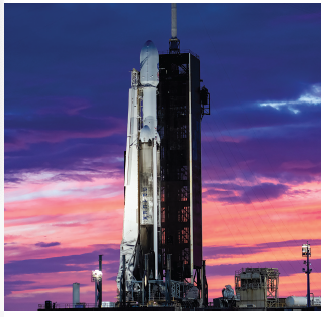
The global space economy grew 7.4% to $570 billion in 2023, the second year of consistent growth based on revised 2021 and 2022 totals.
Satellites central to 2023’s record defense spending
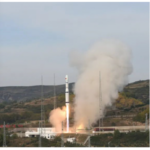
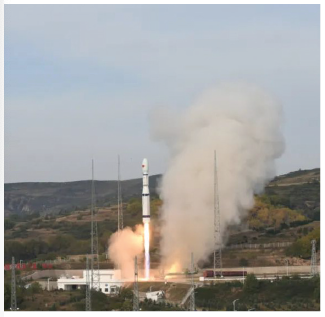
Led by the United States with $835 billion in total defense spending, military budgets around the world grew to record levels in 2023 and appear on track for another record year in 2024, driven by increased tensions in Asia, the outbreak of war between Israel and militant groups, and the grinding conflict in Ukraine.